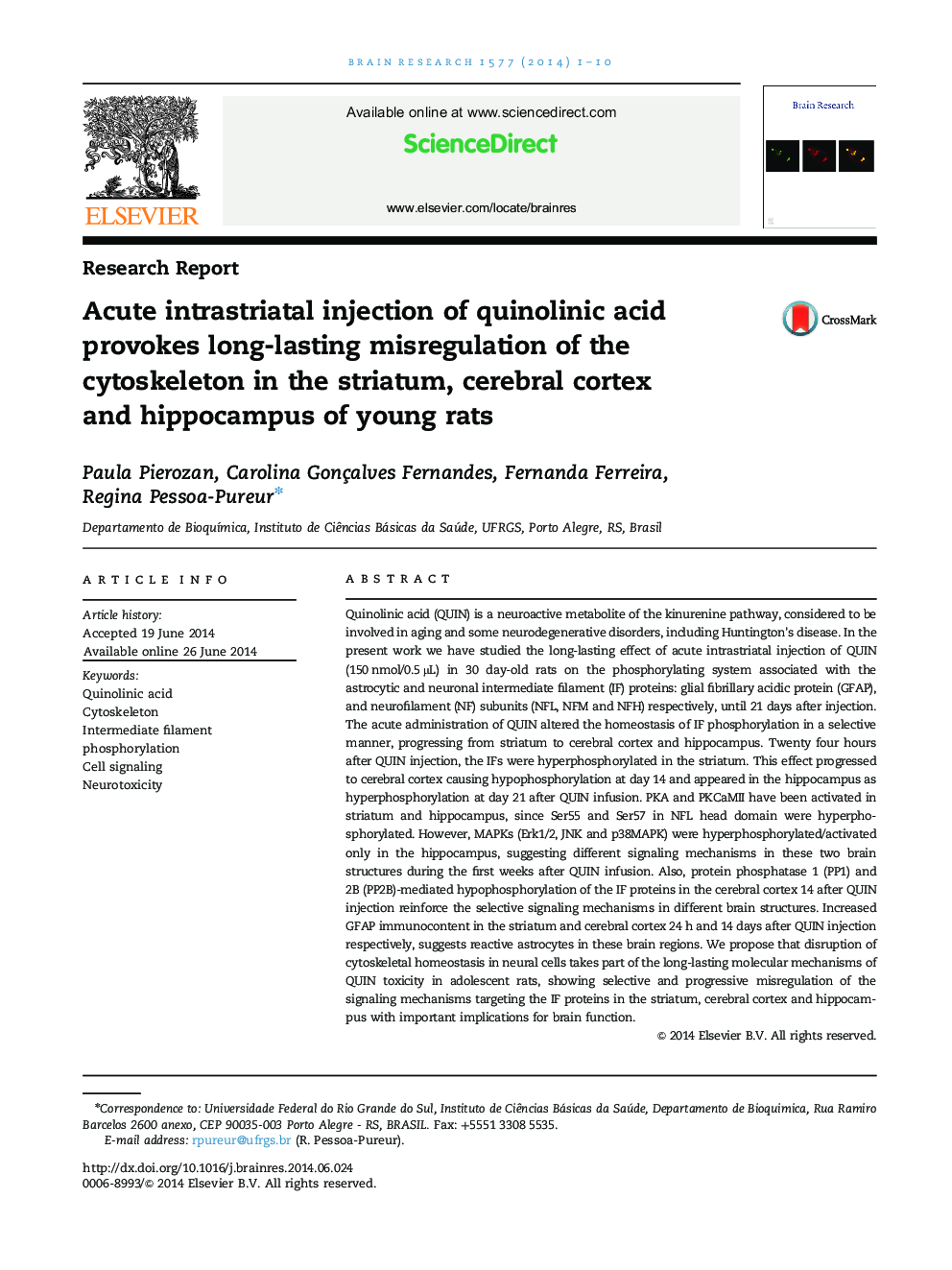| کد مقاله | کد نشریه | سال انتشار | مقاله انگلیسی | نسخه تمام متن |
|---|---|---|---|---|
| 6263328 | 1613862 | 2014 | 10 صفحه PDF | دانلود رایگان |
- Quinolinic acid (QUIN) disrupts the corticostriatal and hippocampal cytoskeleton.
- Disrupted cytoskeleton supports in vivo QUIN induced brain damage.
- Hyperphosphorylated cytoskeleton is observed in the first weeks after QUIN injection.
- Ca2+ mechanisms underlie misregulated phosphorylation/dephosphorylation pathways.
Quinolinic acid (QUIN) is a neuroactive metabolite of the kinurenine pathway, considered to be involved in aging and some neurodegenerative disorders, including Huntington׳s disease. In the present work we have studied the long-lasting effect of acute intrastriatal injection of QUIN (150 nmol/0.5 µL) in 30 day-old rats on the phosphorylating system associated with the astrocytic and neuronal intermediate filament (IF) proteins: glial fibrillary acidic protein (GFAP), and neurofilament (NF) subunits (NFL, NFM and NFH) respectively, until 21 days after injection. The acute administration of QUIN altered the homeostasis of IF phosphorylation in a selective manner, progressing from striatum to cerebral cortex and hippocampus. Twenty four hours after QUIN injection, the IFs were hyperphosphorylated in the striatum. This effect progressed to cerebral cortex causing hypophosphorylation at day 14 and appeared in the hippocampus as hyperphosphorylation at day 21 after QUIN infusion. PKA and PKCaMII have been activated in striatum and hippocampus, since Ser55 and Ser57 in NFL head domain were hyperphosphorylated. However, MAPKs (Erk1/2, JNK and p38MAPK) were hyperphosphorylated/activated only in the hippocampus, suggesting different signaling mechanisms in these two brain structures during the first weeks after QUIN infusion. Also, protein phosphatase 1 (PP1) and 2B (PP2B)-mediated hypophosphorylation of the IF proteins in the cerebral cortex 14 after QUIN injection reinforce the selective signaling mechanisms in different brain structures. Increased GFAP immunocontent in the striatum and cerebral cortex 24 h and 14 days after QUIN injection respectively, suggests reactive astrocytes in these brain regions. We propose that disruption of cytoskeletal homeostasis in neural cells takes part of the long-lasting molecular mechanisms of QUIN toxicity in adolescent rats, showing selective and progressive misregulation of the signaling mechanisms targeting the IF proteins in the striatum, cerebral cortex and hippocampus with important implications for brain function.
Journal: Brain Research - Volume 1577, 19 August 2014, Pages 1-10
